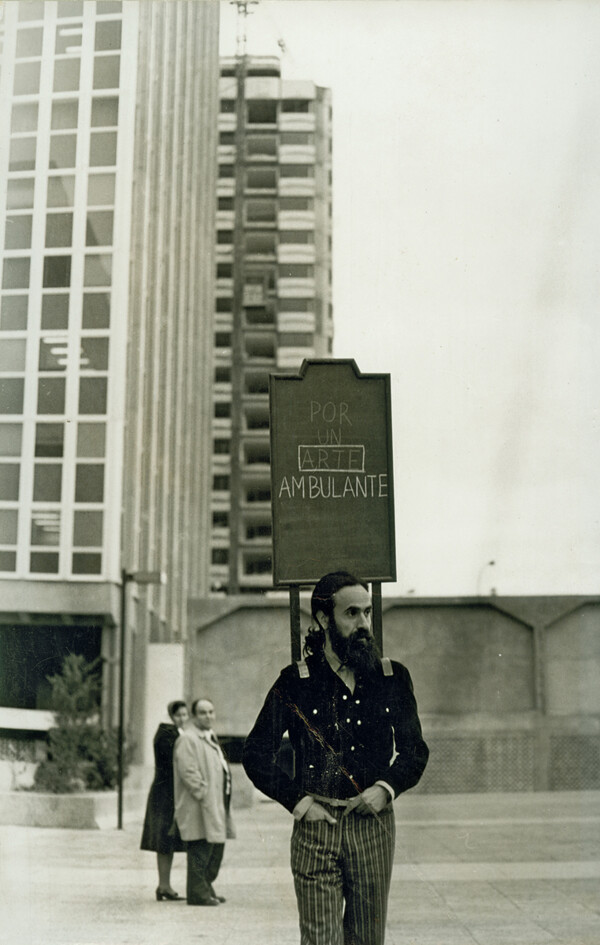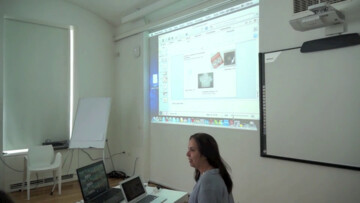The archive has perhaps become an overstressed concept in the last few decades of art criticism. Nevertheless, within specific institutional or artistic practices, archives do embody particular meanings. Michel Foucault, in The Archaeology of Knowledge (1969), considers archives as:
"systems of statements (whether → events or things) […] one should seek the immediate reason for them in the things that were said not in them, nor in the men that said them, but in the system of discursivity, in the enunciative possibilities and impossibilities that it lays down. The archive is first the law of what can be said, the system that governs the appearance of statements as unique events. But the archive is also that which determines that all these things said do not accumulate endlessly in an amorphous mass, nor are they inscribed in an unbroken linearity, nor do they disappear at the mercy of chance external accidents; but they are grouped together in distinct figures, composed together in accordance with multiple relations, maintained or blurred in accordance with specific regularities […]" [1]
Archives as tools for historicisation also raise the question of the canon, in other words, of “what can be said”. Western art history functions in this sense, as a by-product of a sort of hegemonic archive that is constantly being reproduced through the educational system, and its permanence is thus guaranteed in the global media network.
Against this background, some questions could be posed concerning specific archives: where are they, under which circumstances have they been created, following which purposes and uses, and, finally, what are the instruments for the “frontier thinking” they are able (or not) to activate? In this framework, the relationship between modern/colonial comprises two sides of the same dynamics. As far as archives in Latin America are concerned, coloniality stands for the hidden face of modernity and its very condition of possibility. Censorship is also connected to closed archives, which are linked to dictatorial political regimes. They always hold the potential for promoting a rewriting of history.
Archives are also connected to the → geopolitics (→ geopolitics) of knowledge, and can often be related to disputes concerning antagonistic definitions of artwork. They embrace some contradictions, such as the plea for memory in tension with the hegemony of the present, and the eagerness for visibility within the global media market that shapes present “reality” on the Internet. Within artists’ archives, where an important part of artistic contemporary memory is kept, such conflicts most frequently arise as a result of the pressures imposed by the global market.
Archives are also tools to reflect upon contemporary art and institutional practices, as they can embody the crossroads posed by the work of art and documentation. In art museums, archives can be disruptive, as they present discrepant conceptions of artworks and alternative versions of institutional history.
Archive in the frontier: A short story
The Spanish conceptual artist Isidoro Valcárcel Medina (born 1937) travelled to South America in the years 1975/76. The map he sketched of this trip includes Brazil, Argentina, Paraguay and Uruguay. He moved around with light luggage, willing to learn about the different places he happened to visit through the artistic projects he proposed in situ. In Brazil, he performed The City and the Foreigner: Three exercises of approximation, a series of actions he carried out in the city of São Paulo in the winter of 1976. In these Medina investigated the limits of communication by exercising a certain epistemology of the frontier. As a foreigner, he chose to explore the similarities between the Portuguese and Spanish languages, recording the hilarious conversations he engaged in by speaking Spanish with anonymous passers-by, all Portuguese speakers, in the streets of São Paulo.

Isidoro Valcárcel Medina, Hombres Anuncio (Advertising Men), 1976. Photo courtesy of MAC USP Cidade Universitária.
The Dictionary of the Peoples was the second exercise of approximation that was part of the Brazilian actions. In this, Medina offered visitors to the Museum of Contemporary Art, University of São Paulo (MAC USP) a piece of paper on which was written: “I am a foreign artist visiting Brazil. I do not speak Portuguese, please, write here any word of your language”. As a result, a list of words emerged with Portuguese in one column and Spanish in the other, the whole thing unedited. There is no logical order to the list – some words are repeated, others misspelt, some people included drawings and the sequence in which the words appear does not allow any logical organisation as a proper lexicon. The word “love”, for instance, features six times, and “freedom” twice, in the resulting dictionary.
The third exercise of approximation in the São Paulo project was the Touristic Visit. The record of this last exercise has been kept in the Museum’s archives in the format of a short note published in a local newspaper, inviting people to accompany the artist on a tourist visit to the city. Nobody showed up, recalled the artist in a recent interview. The records of this project, that is to say, the tapes on which Medina recorded the interview, the newspaper notes on the touristic visit, and the dictionary’s loose sheets of paper, did not find their correct home for many years within the MAC USP’s collection. Instead they drifted around, between the library and archives, not recognised properly as artworks. It has thus only been possible to show them very recently in an exhibition (2012) [2] of the artist’s work in the same museum where he carried out the action forty years before. Here it should be noted that, as Boris Groys [3] warns, “the unexhibited artwork has ceased to be an artwork; instead, it has become art documentation. Artworks are manifested only in the exhibition”. That is the performativity of the archive. In this sense archives are dialectical images, as they are able to connect the past with the present, and thus open up other possible futures.



